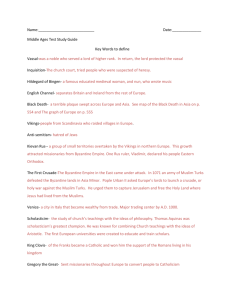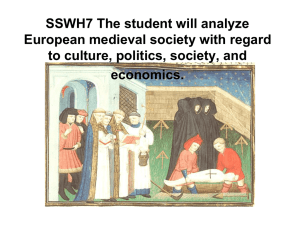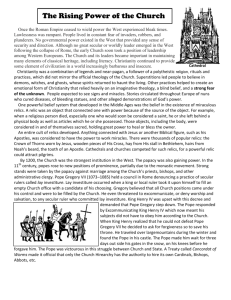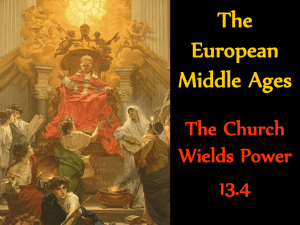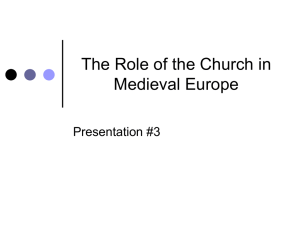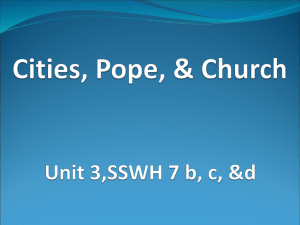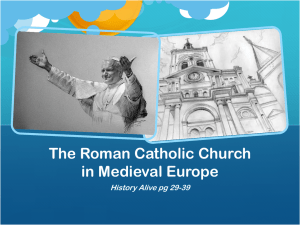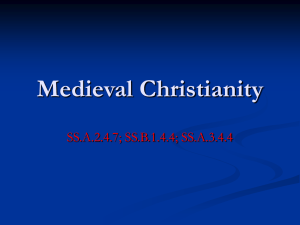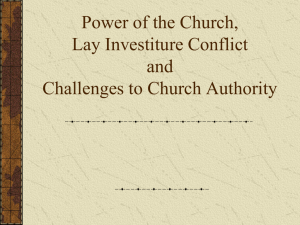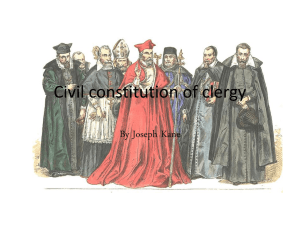Outcome: The power of the Church
advertisement
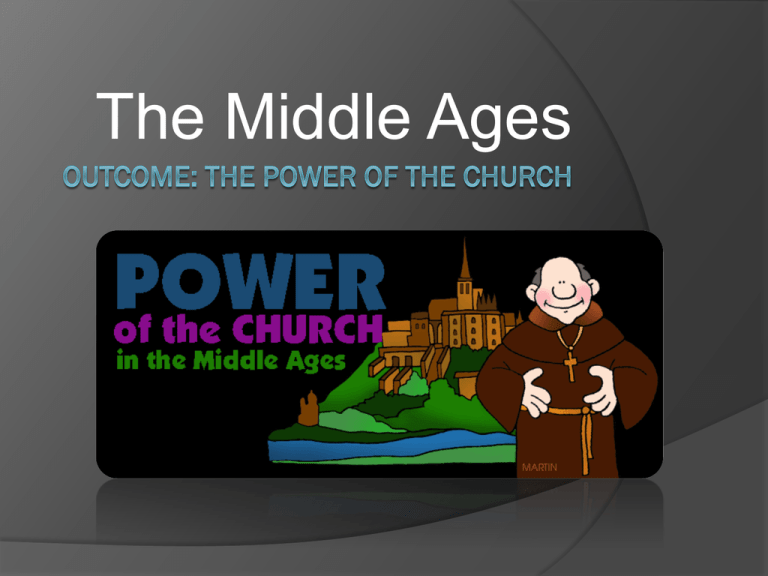
The Middle Ages The Power of the Church 1. Christianity in the early Middle Ages a. As society withered after the fall of Rome, Christianity was a constant b. Popes and church leaders would be able to use the power vacuum in Europe as a way to expand the power of Christianity throughout the Middle Ages c. Christianity was spread by: I. Missionaries who risked their lives to spread Christianity II. Clovis when he united the Franks through the use of Christianity III. Attacks by Muslims spurred people to convert to Christianity The Power of the Church 2. Structure of the Church c. The Church had different ranks of clergy, or religious officials Pope was head of Church All clergy, including bishops and priests fell under pope’s authority d. For most people, local priests served as the main contact with the Church a. b. The Power of the Church 3. Religion as a Unifying Force a. Feudalism created division but Church teachings bonded them together b. Provided people with a sense of security and of belonging to a religious community c. Priests and other clergy administered sacraments (religious ceremonies) All were subject to canon law, or Church Law d. The Power of the Church 4. Education a. The Church offered the only place to receive an education in the Middle Ages b. Monasteries were religious communities for men c. Men in monasteries were called monks and gave up possessions to devote a life serving God d. Women, or nuns, lived in convents e. St. Benedict wrote a book setting a practical set of rules for monasteries The Power of the Church 3. Far-Reaching Authority of the Church a. The Christian Church was becoming secular or worldly; extending its influence into all aspects of daily life especially politics b. Example of Secular: Pope Gregory I used church revenues to raise armies, repair roads, and help the poor c. The Church sought to influence spiritual and political matters when it crowned Charlemagne Roman Emperor in 800 d. Pope Gelasius I suggested that God had created two swords: i. ii. iii. iv. v. vi. One sword was religious ----> held by pope One sword was political ----> held by the emperor Pope bows to emperor in political matters Emperor bows to pope in spiritual matters If each kept authority in own realm, the two could live in harmony Unfortunately, this separation of church and state didn’t always happen The Power of the Church 4. The Emperor Clashes with the Pope a. b. c. d. e. f. g. h. i. j. Church unhappy with use of lay investiture Lay investiture: Kings appointing church officials Pope Gregory VII banned lay investiture in 1075 German Emperor Henry IV was furious with Pope Gregory VII Henry demanded the pope step down; Gregory excommunicated Henry Excommunication: taking away a person’s right of membership in the Church Henry approached Gregory for forgiveness and was forced to wait in the snow for 3 days Power of the Pope was much greater than German kings Future kings would attempt to exert power over the papacy (pope) These attempts would weaken German provinces in Europe Result: Throughout the Middle Ages, the power of the Church grew. It was able to provide unity, education, and strong empires even allowed popes to abandon morality and call for the bloody event known as The Crusades.


